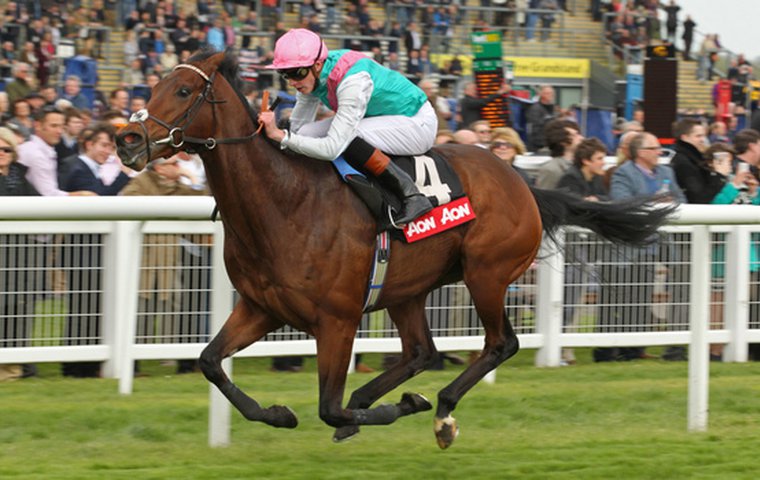
Simon Rowlands, head of international research and development at Timeform, explains how this weekend’s Classics on either side of the Atlantic illustrate the potential of racehorse ratings.
The United States has its Beyer Speed Figures, the United Kingdom has its ratings - like those produced by Timeform, and around the horseracing world various ways of measuring performance are favoured, so that handicapping (in both the U.S. and non-U.S. sense) does not have to tackle every race from a standing start.
Overall time is considered less important in the U.K. than in the U.S., but that is not to say it is dismissed. “Form,” or class, ratings properly take time into account, and vice versa. Whether the starting point is form or time, the upshot is usually a number that can be compared with other numbers, achieved under different circumstances, and sometimes in different times and places altogether.
Timeform form-based ratings, which have been published since the 1940s and now have a truly global scope, exist on a pound-based scale from 0 to 140, and sometimes more.
Frankel’s 147 Timeform rating is the highest in history. The Longines World’s Best Racehorse Rankings (formerly the International Classifications), issued by the International Federation of Horseracing Authorities, are on a level approximately five pounds lower, and had Frankel at 140. Wise Dan is rated 134 by Timeform even though he has not run to that level since the G1 Ricoh Woodbine Mile Stakes in September.
In most cases, ratings are largely descriptive: They attempt to summarise what a horse achieved on a given occasion and how that horse itself can be summarised from an array of such performances. However, in this age of improved means of gathering and interrogating data, ratings are increasingly being applied to other aspects of horse racing performance, as well as being used more predictively.
Examples of both the descriptive and predictive potential of ratings can be provided by this weekend’s major races at Newmarket Racecourse and Churchill Downs.
There is little between an average winner of the 2,000 Guineas (126.7) and the Kentucky Derby (126.0) in the last 10 years on Timeform ratings, but the former has been in the ascendancy more recently (128.0 compared to 123.8 in the last five years).
The difference is smaller, and almost disappears when considering the average ratings of first three finishers, achieved in the races themselves: the Kentucky Derby has lacked stellar winners of late, but has generally held firm further down the field.
The figures speak emphatically in favour of the Kentucky Oaks over the 1,000 Guineas as being the stronger fillies’ race: Average ratings of winners in the last 10 years have been 122.2 and 116.6, respectively, with little variation chronologically, and are backed up by first -three averages.
So, some sort of an expectation of what the winners of those races may achieve in terms of ratings – subject to field size, margins between horses, and so on – is known in advance.
Of course, in many cases, contesting such races represents the biggest test of a horse’s career to that point. Ratings tell us that the winner of the 2,000 Guineas improves on its pre-race rating by an average of about nine pounds, but that the 1,000 Guineas winners step up by only about five pounds. The figures for the Kentucky Derby and Kentucky Oaks are eight and seven pounds, respectively.
Therefore, if horses tend to improve in winning such races, what guide are ratings? Well, in addition to telling us which horses seem likely to have to improve the most, they can tell us – predictively – which sorts of horses are more likely to do that improving than others.
None of the horses going into Newmarket’s 2,000 Guineas on May 3 has a Timeform rating up to race-winning par, but several come close. History shows that unbeaten horses are, perhaps unsurprisingly, more likely to improve their pre-race ratings (by about four pounds) than those that have been beaten (though horses that have been beaten just once fare better than those that have been beaten more often).
Precedent also shows that: Three lifetime runs prior to the first colts’ Classic gives the biggest scope for rating improvement in the race (by about three pounds); that a run in the current year is better than none, or more than one (by about a pound); and that having won at the Guineas distance of a mile, or more, is a positive (by about four pounds).
Those figures are positive in most regards for the short-priced favourite, Kingman, who is unbeaten in three runs, including in a major Guineas trial this year, but not in terms of distance since Kingman has raced only at seven furlongs.
They are arguably even more positive for Toormore (unbeaten in four runs, including in the eight-furlong G3 Craven Stakes this year), Kingston Hill (unbeaten in three runs as a juvenile, including twice at eight furlongs, but not raced this year), and Australia (lost on debut, but won both subsequent races as a 2-year-old, including at eight furlongs). That trio has more improvement to make than Kingman, but their backgrounds suggest doing so is a definite possibility.
Ratings also show that there are good and not-so-good editions of Britain’s first Classic, ranging from those won by Haafhd in 2004 and Sea The Stars in 2009 (first -three finisher average of 124.7) to that won by Footstepsinthesand in 2005 (117.3).
Improvement is required from the protagonists this year, as in most years, but the signs at this stage are that the 2,000 Guineas of 2014 could be one of the better ones.

